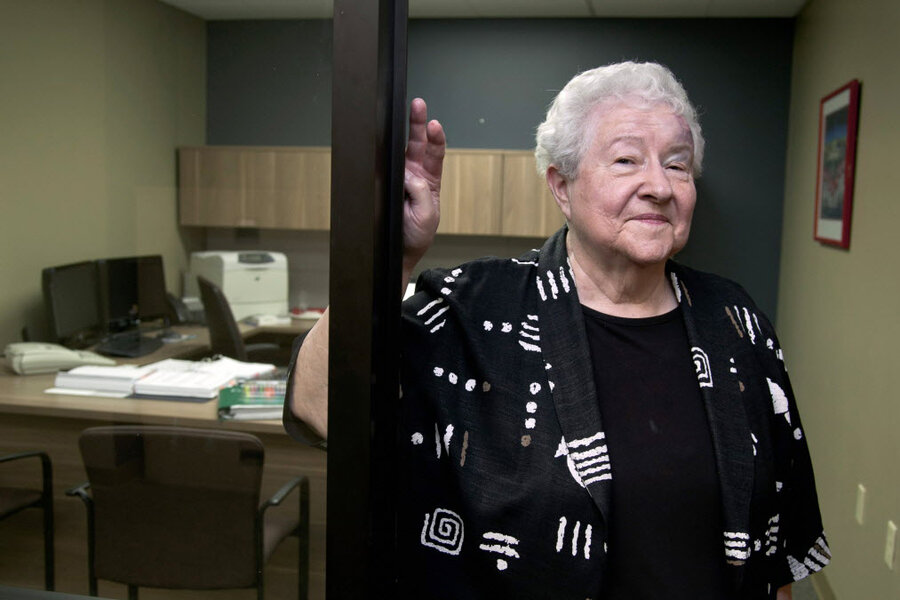Annual Social Security adjustment will be a meager increase
Loading...
| Washington
Social Security recipients shouldn't expect a big increase in monthly benefits come January.
Preliminary figures show the annual benefit boost will be between 1 percent and 2 percent, which would be among the lowest since automatic adjustments were adopted in 1975. Monthly benefits for retired workers now average $1,237, meaning the typical retiree can expect a raise of between $12 and $24 a month.
The size of the increase will be made official Tuesday, when the government releases inflation figures for September. The announcement is unlikely to please a big block of voters — 56 million people get benefits — just three weeks before elections for president and Congress.
The cost-of-living adjustment, or COLA, is tied to a government measure of inflation adopted by Congress in the 1970s. It shows that consumer prices have gone up by less than 2 percent in the past year.
"Basically, for the past 12 months, prices did not go up as rapidly as they did the year before," said Polina Vlasenko, an economist at the American Institute for Economic Research, based in Great Barrington, Mass.
This year, Social Security recipients received a 3.6 percent increase in benefits after getting no increase the previous two years.
Some of next year's raise could be wiped out by higher Medicare premiums, which are deducted from Social Security payments. The Medicare Part B premium, which covers doctor visits, is expected to rise by about $7 per month for 2013, according to government projections.
The premium is currently $99.90 a month for most seniors. Medicare is expected to announce the premium for 2013 in the coming weeks.
"The COLA continues to be very critical to people in keeping them from falling behind," said David Certner, AARP's legislative policy director. "We certainly heard in those couple of years when there was no COLA at all how important it was."
How important is the COLA? From 2001 to 2011, household incomes in the U.S. dropped for every age group except one: those 65 and older.
The median income for all U.S. households fell by 6.6 percent, when inflation was taken into account, according to census data. But the median income for households headed by someone 65 or older rose by 13 percent.
"That's all because of Social Security," Certner said. "Social Security has the COLA and that's what's keeping seniors above water, as opposed to everybody else who's struggling in this economy."
Seniors still, on average, have lower incomes than younger adults. Most older Americans rely on Social Security for a majority of their income, according to the Social Security Administration.
"It's useful to bear in mind that no other group in the economy gets an automatic cost-of-living increase in their income," said David Blau, an economist at The Ohio State University. "Seniors are the only group."
Still, many feel like the COLA doesn't cover their rising costs.
"You have utilities go up, your food costs go up. Think about how much groceries have gone up," said Janice Durflinger, a 76-year-old widow in Lincoln, Neb. "I would love to know how they figure that."
The COLA is based on the Consumer Price Index for Urban Wage Earners and Clerical Workers, or CPI-W, a broad measure of consumer prices generated by the Bureau of Labor Statistics. It measures price changes for food, housing, clothing, transportation, energy, medical care, recreation and education.
In the past year, food prices have risen 2 percent while home energy prices have dropped 3.8 percent, according to the CPI-W. Housing costs have climbed by 1.4 percent and gasoline prices have increased by 1.8 percent.
Blau said it's common for seniors to feel like the COLA doesn't reflect their rising costs, in part because older people tend to spend more of their income on health care. Medical costs have risen 4.3 percent in the past year as measured by the CPI-W.
"Inflation affects everybody differently unless you happen to be that mythical average person who buys the average bundle of goods," Blau said.
By law, the Social Security Administration compares the price index for July, August and September with consumer prices in the same three months from the last year in which a COLA was awarded. A COLA was awarded a year ago, so the index from July, August and September of this year is being compared with the index from the same period in 2011.
If prices go up over the course of the year, benefits go up, starting with payments delivered in January. But if prices go down, benefits stay the same. That's what happened in 2010 and 2011, when there was no COLA.
This year, consumer prices for July and August indicate next year's COLA would be 1.4 percent. The price index for September — the final piece of the puzzle — will be released Tuesday. Several economists said they don't expect it to change the projected COLA by more than a few tenths of a percentage point, if at all.
Vlasenko estimates the COLA will be from 1.5 percent to 1.7 percent. AARP estimates it will be about 1.5 percent.
Since 1975, the annual COLA has averaged 4.2 percent. Only five times has it been below 2 percent, including the two times it was zero. Before 1975, it took an act of Congress to increase Social Security payments.
"Over the past year, consumer prices have only gone up a little bit," Blau said. "By historical standards, it's a very low rate of increase."







